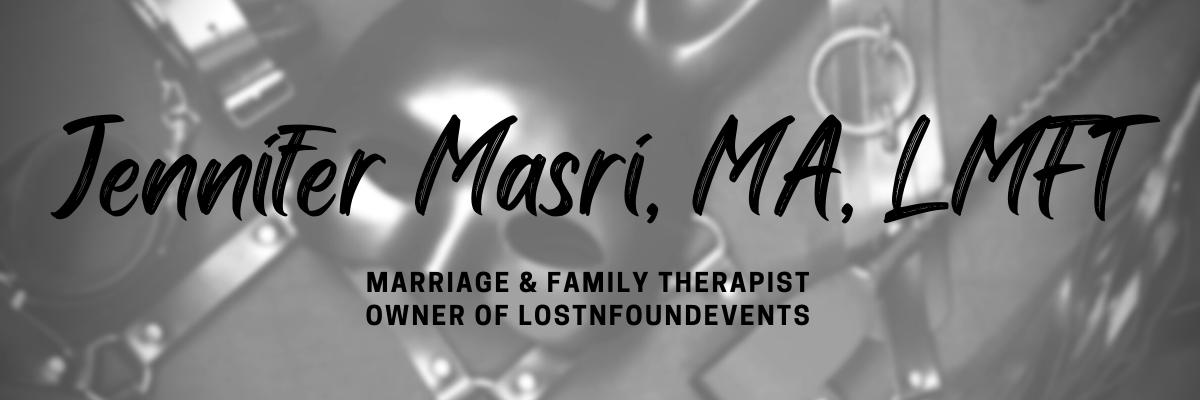This is not my original writing – reference: https://www.morethantwo.com/polymistakes.html
This is a long article, however, if you are in a poly dynamic or thinking about entering one, this hits on many important points. I like it because it is written for those who are approaching poly from a well-intentioned and compassionate place, yet mistakes and hazards can still happen.
Common mistakes in poly relationships
With grateful acknowledgement to Suzie, for her insight and contributions
There is an excellent guide to screwing up poly relationships on the alt.polyamory site, which describes in some detail the petty, mean-spirited, malicious things that you can do to help ensure that your relationship fails in the most dramatic, painful way possible.
This is not that page.
This page is designed to describe some of the mistakes you can make in a non-monogamous relationship even if you are compassionate, honest, and well-intentioned. Sometimes, building a stable, happy, non-monogamous relationship is not intuitive, and there are mistakes that can be made along the road no matter how well-intentioned you may be. Ideally, you should seek to learn from other people’s mistakes rather than your own; it’s a lot less trouble.
Don’t make assumptions about your partner or your relationship; talk about everything
There are people in the world who don’t like talking about relationship stuff, or who see it as an onerous chore. The problem with that is you can easily end up in a situation where you think something’s okay with your partner, or that you’re at some place in your relationship with your partner, or that you’re in a type of relationship that allows some things or doesn’t allow others, and your partner has a completely different idea. Finding that out by talking about it is a lot less dramatic than finding it out by crossing a line you didn’t even know existed. Be clear up front about what your partner expects from you (and about what you expect from your partner), and you’ll be a lot happier, trust me.
Don’t ignore the consequences of your actions—even the unintended consequences
The law of unintended consequence is as universal and as inescapable as the law of gravity, and is certainly more than capable of screwing up your romantic relationship beyond all recognition.
Put simply, your decisions and your actions have consequences for both your partners and your relationships, and you bear responsibility for these consequences—even if you feel that your decisions were appropriate and justified, even if you feel that your actions were expressly permitted by the rules of your relationship.
The most common example of unintended consequence can be found in relationships that have “veto” rules permitting one partner to veto another partner’s romantic relationships. Most of the time, veto is a negotiated and mutually agreed-upon rule; the people in a relationship that includes a veto power explicitly give that veto power to their partner.
Yet if your partner falls in love with someone, and you then veto that relationship, you are almost certain to hurt your partner. It does not matter if your partner explicitly agreed to that veto power and explicitly consented to give you that power; when a person loses a romantic relationship, it hurts. That’s the way human beings work. When you hurt your partner, that can and likely will affect your relationship with your partner, even if your partner explicitly gave you that power. Now, I’m not saying you should never exercise a veto; but I am saying that when you make a decision affecting your partner, seek to understand how it affects your partner, and take responsibility for that. Say “Yes, I know this hurts you, and I’m sorry.” Acknowledge that your decisions may affect your relationship with your partner, and take responsibility for those effects, even if they were unintended.
This is probably the single most crucial factor to the success of any relationship. Everything you do—whether it’s inviting your partner to some function but not inviting your partner’s partners, or seeking to exclude your partner’s other partners from things that are important to you, or even something as simple as not acknowledging the value your partner sees in his or her other relationships—will affect your relationship with your partner, sometimes in subtle ways and sometimes in ways that are more obvious. Be aware of the consequences of your decisions as well as your reasons for making them.
Don’t try to micromanage your feelings, or those of your partners
One of the more common problems in a polyamorous relationship arises when one of the people involved, in an effort to feel less threatened or more secure, seeks to control the extent to which his or her partner becomes emotionally involved with another partner. People often feel threatened by emotional intimacy—sometimes, more threatened than by physical intimacy. But trying to micromanage emotions isn’t the way to solve that problem.
Emotions are resistant to being managed that way; it’s virtually impossible to pass a “rule” that says “you may be physically intimate with another person, but you may not be emotionally intimate past this point” and have it stick. It’s not always possible to predict what relationships will become emotionally intimate, or how they’ll become emotionally intimate; attempting to manage insecurity or fear by micromanaging emotional connections is virtually certain to fail. In fact, sometimes, attempts to micromanage emotional intimacy lead to the next problem, which is:
Don’t destroy the village in order to save it
It’s a given in most relationships of any sort at all that hurting one’s partner will hurt the relationship. It really doesn’t take a rocket scientist to realize that if you break your lover’s heart, you will cause damage to your relationship.
One way to break your lover’s heart is to force your lover to withdraw from a person he or she loves, which is where rules forbidding emotional intimacy generally end. Because emotions can’t be arbitrarily controlled, and because it’s not always possible to predict in advance when a relationship will become emotionally intimate, people who build relationship structures in which emotional intimacy is forbidden often end up unintentionally violating those structures. When that happens, a choice must be made: the rules forbidding emotional intimacy can change, or the person who’s become emotionally intimate with a new partner can withdraw from that partner. Doing the latter is going to cause a lot of pain, both for that person and for his or her new partner; eventually, that pain is going to affect the existing relationship.
In an effort to avoid making this mistake, though, people sometimes commit the next, which is:
Don’t expect someone to develop the same relationship with both you and your partner
One way people sometimes seek to address the problem of feeling threatened by emotional intimacy is to say “Okay, emotional intimacy is not a problem, as long as a new partner becomes involved with both of us and loves both of us. That way, nobody feels left out, and nobody needs to feel jealous.”
On paper, it looks great. In the real world, however, it’s not usually successful, because it rests on an assumption that isn’t true—namely, that it’s possible to dictate that two separate relationships can develop at the same rate and to the same degree with two different people.
Let’s assume that a person begins dating a pair of identical twins, and that he or she spends the same amount of time with each of them. Even in that situation, it’s not realistic to expect both relationships to develop at the same rate and in the same way. Relationships, like people, are individuals, and it simply isn’t realistic to think that a relationship with two different people will turn out the same.
People will sometimes seek to do this because they feel that it will protect them from insecurity or jealousy—“I feel threatened when my partner has an emotionally intimate relationship, but if the person my partner is involved with has the same relationship with me, I won’t feel left out, so I won’t feel threatened.” The better approach, I think, is to create a relationship that is inclusive rather than exclusive, but that does not rely on an impossible goal like “anyone new must date both of us and must develop the same kind of relationship with both of us.” Inclusiveness does not have to mean “two relationships that are the same”; indeed, it is possible to construct inclusive relationships in which the new person is only romantically involved with one member of an existing couple, but has developed a strong friendship with the other.
And while we’re at it, the second mistake people make along these lines:
Don’t assume that you can prevent jealousy by making sure you and your partner date the same person
This is one of the most common mistakes made by couples who decide to try out polyamory. The idea is that if one of the members of the couple has insecurity or jealousy issues, the way to keep this from becoming a problem is if both of them date the same person. After all, if your partner is sleeping with someone else, but you’re also sleeping with that person, you won’t get jealous, right?
Wrong.
Jealousy doesn’t work that way. Jealousy isn’t rational. It doesn’t make any difference if you and your partner are sleeping with the same person; if you are insecure, or have unresolved fears of loss or of being replaced, you may still feel jealous if your partner has another lover even if that person is also your lover.
The way to keep from feeling threatened or jealous is to figure out what lies at the root of the jealousy and then deal with that, not by creating relationship structures that are intended to make the jealousy go away. Jealousy is rooted in other emotions, such as insecurity or fear of loss. Dating the same person that your partner is dating does not make those other emotions go away.
Don’t forget your priorities
It is completely natural to become so wrapped up in the joy of a new relationship that you neglect your existing relationships; in fact, it often takes a considerable act of will to pay full attention to your existing relationships.
But doing this is necessary. Neglecting existing relationships in the giddy rush to a new relationship can be extremely destructive…to all of the relationships. Don’t get carried away; pay attention to what you’re doing. Take care to make all of your partners feel loved, needed, and secure.
Don’t start new relationships if your existing relationships have problems
Polyamory is not a way to evade problems in your romantic life. In fact, problems in one relationship have a very nasty habit of spilling over into your other relationships if you’re not careful.
If you have a relationship that is facing difficulty, that is not the time to be starting new relationships. Doing so is likely to create problems in the new relationship and exacerbate the problem in your existing relationship. It’s unfair to both your existing lover and to any new lover to begin relationships under these conditions.
And on the flip side of that same mistake:
Be careful about getting involved with an existing couple who haven’t worked out what polyamory is all about
One almost-certain way to run into heartache is to start dating one part (or both parts!) of an existing couple when each of the members of that couple has a different idea about how their relationship should work.
Any time two people are clearly not on the same page about what is and is not allowed, or have different ideas about how their relationship should be conducted, you’re likely to find trouble. And as often as not, when problems occur between the members of the existing couple as a result, you’ll be the bad guy. It pays to do what you can to see that everyone is on the same page before your heart is on the line.
And while we’re on the subject, the flip side of that same coin is…
Don’t get involved in polyamory if you’re still not sure whether or not you have a poly relationship in the first place, or if you’re not prepared to take responsibility for your actions
It should go without saying, but don’t invite someone into your relationship if you aren’t clear whether or not your relationship permits it. If you are partnered, and you think you might like to explore polyamory, be clear with your partner about it before you bring someone else in. And when you do bring someone else in, be clear that this person’s heart is on the line. You are offering this person physical intimacy, emotional intimacy, or both; take responsibility for that. Don’t let him in, create vulnerability, and then turn around without warning and say “well, my partner and I aren’t sure if we’re poly or not.”
Your partners are human beings, not commodities; if you want partners who will treat you well, consider your feelings, and behave with compassion and respect, you need to treat them well, consider their feelings, and behave with compassion and respect yourself. Get clear in your own head and establish with your existing partner how your relationship works and what the terms of your relationship are; don’t make someone else find this out by trial and error! If you’re not sure whether or not you’re in a polyamorous relationship, you aren’t in a polyamorous relationship.
Don’t assume that needs not being met in one relationship can be met in another
Often, people may fall into the trap of believing that if some need is not being met in a relationship, the solution is to meet that need by seeking another relationship. This is particularly common in primary/secondary relationships, where if the secondary’s needs aren’t being met, the secondary may seek out other relationships to meet them.
In reality, many needs are connected to a person, not to a relationship. If you need A, B, C, D, and E, don’t assume you can have needs A, B, and D met from Joe, and needs C and E from Bob. What you may find is that you need A, B, C, and D from Joe, and need A, D, and E from Bob; getting A from Joe does not mean that you do not also need it from Bob.
Don’t try to force your relationships to fit a predefined mold
Many people believe that communication is Rule #1 in a polyamorous relationship. If that’s true, then Rule #0 is: Let your relationships be what they are.
When someone who is in a polyamorous relationship begins searching for a new partner, sometimes the temptation exists to search for a new relationship that will fit within a predefined form—for example, “I want a bisexual female who will date both my partner and me, who is already partnered, and who likes skeeball.”
Like any kind of romantic relationship, a poly relationship isn’t likely to be quite that tidy. Often, a relationship may fail if the people involved in that relationship try to force it to fit some predefined set of conditions, rather than allowing the relationship to grow in whatever direction is natural.
This is particularly true in situations where an existing couple or group seek out a new relationship that will involve everyone equally—for example, “We are a couple looking for another couple in such a way that all four of us will be romantically involved with one another.” The impulse here can be to try to force the new relationships to fit that pattern even in situations where the relationships, if allowed to grow naturally, wouldn’t take that shape.
But this can happen in one-on-one relationships as well. When people say things like “I want a secondary partner,” they may be committing the advanced form of this mistake; you can’t always predict in advance how intimate a romantic relationship will become. You can’t force a light, casual relationship to become deep and passionate—but you also can’t force a deep, passionate relationship to be light and casual!
A very valuable tool that can be used to avoid this problem is to treat any relationship between two people as though it has three components: the needs of the first person involved, the needs of the second person involved, and the needs of the relationship itself. Often, the relationship itself acts like a third, independent entity, and it’s wise to listen to the needs of the relationship.
Don’t try to isolate your relationships
Nothing exists in a vacuum. Often, people try to isolate their relationships from one another, and try to “compartmentalize” the relationships so that each is a separate, distinct entity. This is usually more common with relationships that follow a primary/secondary model.
Trouble is, it doesn’t work. Each relationship can and will exert an influence on the others. It’s important to keep this in mind, and to understand that the things you do in one relationship have consequences for the others.
On the other hand, it’s also easy to go overboard in the other direction, which leads us to the next poly mistake:
Don’t try to combine your relationships, or force them to act as a single relationship
This happens most often in people seeking to create an intentional, equilateral relationship involving three or four people. The impulse is for all the people involved to want to do everything together—to spend all their time together, go out together, and so on.
The dangers here are twofold. First, it can be suffocating to have no space of your own, to always be surrounded by other people. Second, this tends to try to “force” the relationship to fit a mold it might not fit naturally. It’s quite normal for all the people in a triad or quad to relate to one another somewhat differently, even if the triad or quad is equilateral; and two of the people may enjoy doing something together that the third doesn’t enjoy, or doesn’t enjoy as much.
This is normal and healthy. There’s nothing wrong with letting the relationships develop as they will; not everyone has the same needs, the same tastes, and the same desires. It doesn’t mean the relationship is not equilateral.
Don’t try to separate yourself from your lover’s other relationships
This most often happens in situations where one partner is polyamorous by nature and the other is monogamous. A number of factors can cause you to try to distance yourself from your lover’s other lovers: Fear, jealousy, insecurity, and so on.
The reality of your lover’s other relationships is almost never as bad as the fear makes it out to be. Getting to know your lover’s other partners can go a long way to driving out that fear. The fact is, a person who is involved with someone who’s poly is also in a relationship with that person’s other partners—even if it’s not a romantic relationship.
If you see those other partners as competitors, it becomes easy to dehumanize them, and the impulse is to vilify and distrust them. This tends to cause a great deal of stress on your relationship with your lover; it also tends to cause you to go crazy.
Once you see your lover’s other partners as human beings, instead of as competitors, it eases any stress you may be experiencing. It also helps you to establish healthy, happy relationships with them.
If, that is, they want a healthy relationship with you. If they don’t, then it’s important to consider the next common poly mistake, which is:
Don’t be afraid to put your foot down
This is one of the hardest lessons to learn.
Not everyone is a good person, and not everyone is perfect, and not everyone makes an ideal match for your lover. Often, we may want to do things that make our partner happy, even if we know better or if we have to sacrifice our own happiness to get there.
This usually works in the short run, and usually causes pain and grief in the long run. Listen to that little inner voice; it’s rarely wrong. If something bothers you, speak up about it. If you find something completely unacceptable, say so! Even if it’s irrational, your lover should at least be willing to listen to what you have to say about it.
And speaking of being irrational:
Don’t expect human beings to be rational all the time
We are inherently irrational beings. This is a part of the nature of man. Irrational responses are a part and parcel of who we are as human beings, and these things can’t be addressed rationally.
You may find some of your partner’s behavior or emotional response to be irrational in any romantic situation. This is not necessarily bad; love is not rational. Nor is jealousy.
Remember that you are not always rational, either. Do not attack, browbeat, or berate your partner for behaving emotionally; do not expect that your partner will always act in accordance with reason and logic. It’s not going to happen.
If your partner is acting irrationally, you must still be compassionate and respectful—even if you disagree with things your partner says or does! Treat your partner’s feelings with respect and courtesy. Try to find out why your partner feels the way he or she feels. Often, there may be some underlying reason that is not obvious; if you want to address the feeling, it’s necessary first to find out where it comes from.
People often know that it’s important to be compassionate when faced with jealousy, but it’s important to remember that all of your partner’s feelings are important. Even positive feelings, such as love or new relationship energy, can cause your partner to behave irrationally. Try to understand what your partner is feeling, and why, when you address any problems this behavior may bring up.
Develop good communication and conflict resolution skills
This one is obvious, really, but it bears repeating. A relationship is not doomed until the people in it stop talking to each other and start breaking dishes instead.
Talk to your partner. Honestly. All the time. About everything.
Don’t make unilateral life-altering decisions
Partners should include one another in life-altering decisions. Big announcements of major changes in one’s life can often make one’s partners feel alienated.
Talk to all your partners. Don’t relay information through your other partners
This never works. Seriously. Information that passes through an intermediary never quite gets to its destination without getting mangled. If you need to talk to someone, go directly to that person.
And on a related note:
Don’t rely on relayed information
Never trust that what one partner says about what another partner said is entirely accurate (even if no skewing was intended). Go to the source and get confirmation.
Don’t move too fast
There is no such thing as instant polyamory. Don’t think you have to have sex on the first date. Don’t show up with a moving van on the second date. And don’t call it a “relationship” till you’ve actually dating a while. Try letting things grow naturally, and build something lasting instead.
Polyamorous relationships are not different in kind from monogamous relationships, and the beginnings of any relationship are fraught with peril. Take it slow.
Don’t ignore that little voice in your head
This is an easy mistake to make in any kind of relationship, not just a polyamorous relationship. Sometimes, your heart may tell you one thing even when your head tells you another; even if you can’t put your finger on any rational reason why, it’s often a good idea to listen to your heart when it suggests that something might be wrong.
Just because you can’t find a rational reason why something is wrong doesn’t necessarily mean everything is OK. A wise course of action is to start with the assumption that the little voice is trying to warn you about something you have not consciously become aware of, and to delve deeper into figuring out what that may be.
The little voice is not always right, of course, but don’t write it off just because it’s not rational.
Don’t be afraid of change
Often, especially in a primary/secondary relationship, we may have a subconscious expectation that somebody new can come into our lives and our lives will continue pretty much as they were, undisturbed.
But any romantic relationship is going to leave a permanent mark on the people involved. Any time you introduce someone into your romantic life, even as a secondary, that person can and likely will alter your life permanently.
This is a feature, not a bug. If you bring people into your life, don’t expect to continue on untouched.
Don’t assume every problem you encounter is related to polyamory
When you’re involved in any non-traditional relationship model, it can sometimes be tempting to blame every problem you may encounter on that model. This seems particularly true in polyamory, where it might be easy and tempting to blame the polyamory for whatever trouble you may encounter—“If we weren’t poly, we wouldn’t have to deal with this!”
But that’s not necessarily so. Even traditional, monogamous relationships face their fair share of challenges and difficulties.
For example, if you’re in a poly relationship and you feel that you aren’t getting enough of your partner’s attention, it might be tempting to say, “If you weren’t also involved with so-and-so, I wouldn’t be feeling neglected.” But in any relationship, situations exist that may distract your lover’s attention—work, family, and so on. The problem in this case isn’t really polyamory—it’s time management.
Isolating the root cause of the problem, rather than simply blaming the problem on polyamory, is an excellent way to resolve relationship difficulties.
Make sure your actions and your intentions match
This is a valuable rule to apply to any relationship, but it’s particularly important in a poly relationship.
For instance, if you claim to accept or like your lover’s other partner(s), but in practice you manage to avoid acknowledging the other partner(s) as much as possible (such as never asking about them, never taking any initiative to nurture even the most casual or friendly relationship with them, falling silent or changing the subject whenever your lover mentions them, etc.), then you’re sending a clear message that you wish the other partner(s) didn’t exist.
This is very difficult on the lover-in-the-middle, which is made much worse if you deny that you’re doing this.
Last updated: June 18, 2011
https://www.morethantwo.com/polymistakes.html










